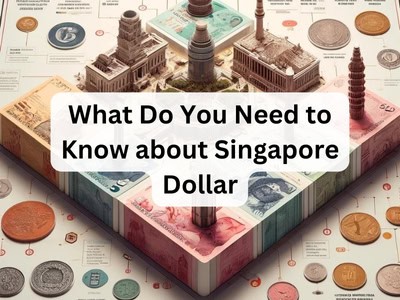This post is also available in:
![]() 简体中文 (Chinese (Simplified))
简体中文 (Chinese (Simplified))
Singapore Dollar Explained: What Do You Need to Know about Singapore Dollar?
 The Singapore dollar, symbolised by S$ with a currency code of SGD, is regulated by the Monetary Authority of Singapore (MAS). The Singapore banknotes feature images of Yusof bin Ishak, who is the first president of the country, while illustrations of civic virtues are on the other side. Singapore Dollar has banknotes of S$2, S$5, S$10, S$50, S$100, and S$1000.
The Singapore dollar, symbolised by S$ with a currency code of SGD, is regulated by the Monetary Authority of Singapore (MAS). The Singapore banknotes feature images of Yusof bin Ishak, who is the first president of the country, while illustrations of civic virtues are on the other side. Singapore Dollar has banknotes of S$2, S$5, S$10, S$50, S$100, and S$1000.
The History of the Singapore Dollar
The Board of Commissioners of Currency of Singapore (BCCS) was established on 7 April 1967. Prior to this, Singapore used the Straits dollar between 1845 and 1939. The Malayan dollar replaced the Singapore dollar not long after this followed by the usage of the Malaya and British Borneo dollar (which were issued by the Board of Commissioners of Currency, Malaya and British Borneo) from 1953 onwards.
Upon joining Malaysia in 1963, Singapore continued to use the common currency. The monetary union between Malaysia, Singapore, and Brunei, however, broke down two years after Singapore’s expulsion and independence from Malaysia in 1965. Singapore issued its first coins and notes after the establishment of the Board of Commissioners of Currency, Singapore in 1967.
At the initial stage of the issuance of the currency, the Singaporean dollar was pegged to the British pound sterling at a rate of S$60 = £7 (which lasted until the demise of the Sterling Area due to the Nixon Shock in the early 1970s). From 1973-1985, Singapore pegged its currency against a fixed and undisclosed trade-weighted basket of currencies as the country’s economy grew over the years.
As of now, Singapore dollar is not only accepted in the country, but it is also accepted as customary tender in Brunei according to the Currency Interchangeability Agreement between the Monetary Authority of Singapore and the Autoriti Monetari Brunei Darussalam (Monetary Authority of Brunei Darussalam).
Monetary Policy
As Singapore’s economy progressed, the demands of complex banking and monetary environment/policies increased. In 1970, the Parliament of Singapore passed the Monetary Authority of Singapore Act, which led to the establishment of MAS on 1 January 1971.
The Monetary Authority of Singapore (MAS), which is also called the Central Bank (the Bank), is the regulator and possess the authority to regulate all aspects of monetary, banking, and financial aspects of Singapore. The Bank’s Monetary and Domestic Markets Management Department sets the monetary policy and is responsible for managing the exchange rate through intervention in foreign exchange markets and adjusting banking system liquidity through money market operations and liquidity facilities.
The Singapore Dollar Bills and Coins
The Singapore dollar has been issued as coins, paper money, and plastic polymer money. The first series of coins was introduced in denominations 1, 5, 10, 20 and 50 cents and 1 dollar in 1967. The second series of coins were introduced in denominations 1, 5, 10, 20 and 50 cents and 1 dollar in 1985. Christopher Ironside designed the other side of these coins (second series).
The aluminium-bronze coin replaced the one-dollar banknotes while the 5-cent coin was also changed to aluminium-bronze (the other 10, 20, and 50 cents remained copper-nickel). The circulation of 1-cent coin was discontinued since 2003.
Singapore’s Exchange Rate Policy
Unlike most countries (including the United States and China) that adopt an interest rate policy where central banks raise or cut interest rates, Singapore uses the exchange rate that guides the Singapore Dollar higher or lower. According to MAS, the exchange rate is said to be one of the best anti-inflation tools for a small and open economy like Singapore.
The Singapore dollar is managed against a basket of currencies of its major trading partners and competitors. In other words, various currencies are trade-weighted in accordance with the importance of the country to Singapore’s trading relations with the rest of the world. MAS operates a managed float regime for the Singapore dollar where the trade-weighted exchange rate is allowed to fluctuate within a policy band, the level and direction of which is announced semi-annually to the market. In light of this, the band spells out a mechanism to accommodate short-term fluctuations in the foreign exchange markets and offers flexibility in managing the exchange rate.
The Singapore Dollar Today
Singapore dollar is no doubt one of the strongest currencies in the world. The consistent efforts of Singaporean government to maintain currency stability and combat inflation have given a positive impact on the currency – many traders treat Singapore dollar as a safe haven currency and a proxy for currencies in the region of Southeast Asia.


